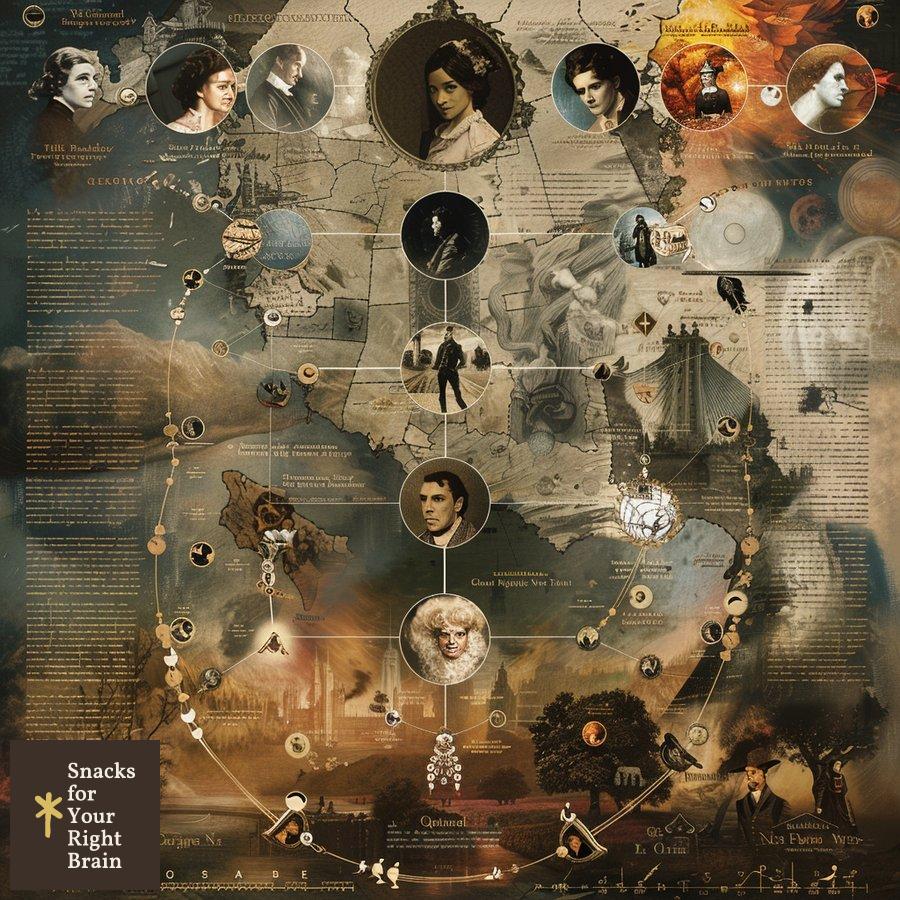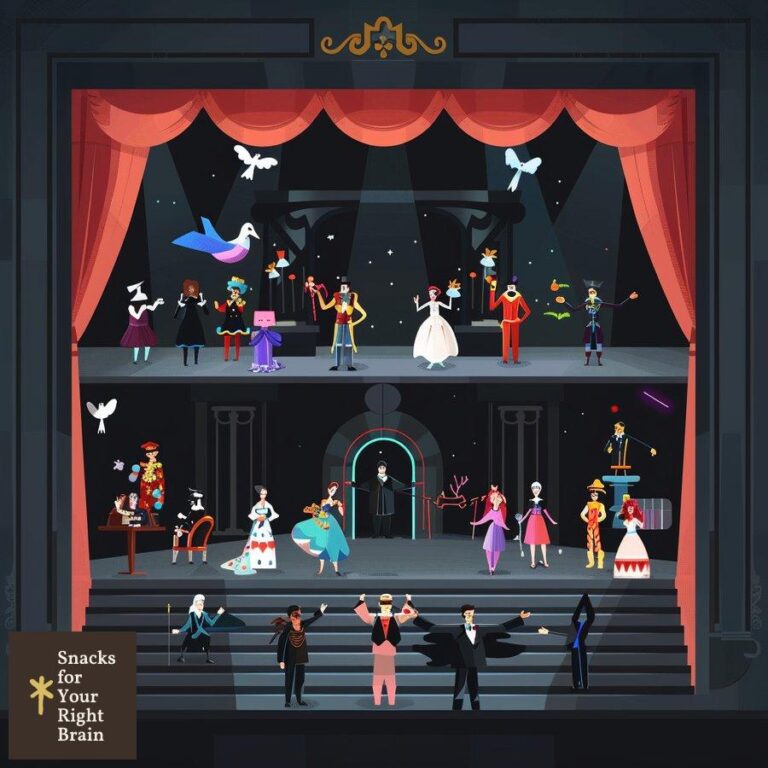What Is the Character Transformation Arc
What is a Character Transformation Arc?
A character transformation arc represents the journey a character undergoes throughout a narrative, showcasing their growth, change, or decline. This arc is essential for creating depth and relatability in characters, allowing readers to engage emotionally with their experiences. At its core, a character transformation arc involves three primary stages: the initial state, the transformative experiences, and the final state.
The initial state establishes the character’s personality, beliefs, and circumstances. The transformative experiences include challenges, conflicts, and relationships that catalyze change. Finally, the final state reflects the character’s evolution, whether it leads to positive growth, tragic decline, or a flat arc where the character remains unchanged.
Semantic Triples
- Character Transformation Arc: journey, growth, change
- Initial State: personality, beliefs, circumstances
- Transformative Experiences: challenges, conflicts, relationships
Why are Character Transformation Arcs Important in Storytelling?
Character transformation arcs are vital for several reasons:
-
Emotional Engagement: Readers often connect with characters who undergo significant changes. This emotional investment enhances the overall reading experience.
-
Theme Exploration: Transformation arcs can effectively convey themes such as redemption, resilience, and the human experience, allowing authors to explore complex ideas through character journeys.
-
Conflict and Resolution: A well-crafted transformation arc introduces conflicts that propel the story forward. The resolution of these conflicts often hinges on the character’s growth or decline.
Semantic Triples
- Emotional Engagement: connection, investment, experience
- Theme Exploration: transformation, complexity, ideas
- Conflict and Resolution: introduction, propulsion, growth
How Do Character Arcs Differ from Plot Arcs?
Character arcs and plot arcs serve distinct yet interconnected roles in storytelling.
-
Character Arcs: Focus on the internal development of characters. They illustrate how a character’s beliefs, motivations, and behaviors change over time.
-
Plot Arcs: Center on external events and actions that drive the narrative forward. They outline the sequence of events that occur in the story.
Comparison Table
| Aspect | Character Arcs | Plot Arcs |
|---|---|---|
| Focus | Internal development | External events |
| Purpose | Show character growth or decline | Advance the narrative |
| Structure | Stages of transformation | Beginning, middle, end |
| Relationship | Influences plot progression | Provides context for character change |
What are the Elements of a Transformation Arc?
Several essential elements contribute to a compelling character transformation arc:
-
Initial State: Establishes the character’s baseline personality and circumstances.
-
Catalyst: An event or realization that initiates the character’s journey of change.
-
Challenges: Obstacles that the character must confront, leading to growth or regression.
-
Climactic Moment: A pivotal point where the character faces a significant choice or realization.
-
Final State: The outcome of the character’s journey, illustrating their transformation.
Semantic Triples
- Initial State: baseline, personality, circumstances
- Catalyst: event, realization, initiation
- Challenges: obstacles, confrontation, growth
How Do You Establish a Character’s Initial State?
Establishing a character’s initial state involves several key strategies:
-
Backstory Development: Provide context about the character’s past, including significant experiences that shape their current beliefs and behaviors.
-
Personality Traits: Clearly define the character’s traits, motivations, and flaws. This clarity helps readers understand the foundation of their transformation.
-
Relationships: Introduce key relationships that influence the character’s life. These connections can provide insight into their initial state and potential for change.
Semantic Triples
- Backstory Development: context, past, experiences
- Personality Traits: traits, motivations, flaws
- Relationships: connections, influence, insight
What Types of Character Transformation Arcs Exist?
Character transformation arcs can be categorized into several types, each reflecting different journeys:
-
Positive Transformation Arc: The character experiences growth, overcoming obstacles and evolving into a better version of themselves.
-
Negative Transformation Arc: The character declines or deteriorates, often succumbing to their flaws or external pressures.
-
Flat Transformation Arc: The character remains fundamentally unchanged despite the events of the story. Their consistency can serve as a contrast to other characters.
Types of Transformation Arcs Table
| Type | Description | Example |
|---|---|---|
| Positive Transformation | Growth and improvement | Elizabeth Bennet in “Pride and Prejudice” |
| Negative Transformation | Decline or regression | Walter White in “Breaking Bad” |
| Flat Transformation | No significant change | Sherlock Holmes in various adaptations |
How Can You Craft a Positive Character Arc?
Crafting a positive character arc involves several thoughtful steps:
-
Identify the Character’s Flaws: Understanding what holds the character back is essential for developing their journey toward growth.
-
Create Meaningful Challenges: Introduce obstacles that force the character to confront their flaws and evolve.
-
Show Incremental Growth: Illustrate small changes in the character’s behavior or mindset throughout the story, culminating in a significant transformation.
-
Provide Supportive Relationships: Surround the character with individuals who encourage growth, offering guidance and support during their journey.
Semantic Triples
- Identify Flaws: understanding, barriers, growth
- Create Challenges: obstacles, confrontation, evolution
- Show Growth: changes, behavior, mindset
What Defines a Negative Character Arc?
A negative character arc is characterized by the following elements:
-
Deterioration of Traits: The character’s flaws become more pronounced, leading to destructive behaviors or choices.
-
Failure to Overcome Challenges: Instead of growing, the character succumbs to their obstacles, often resulting in tragic consequences.
-
Isolation: The character may alienate themselves from supportive relationships, further contributing to their decline.
Semantic Triples
- Deterioration of Traits: flaws, behaviors, destruction
- Failure to Overcome: challenges, succumbing, consequences
- Isolation: alienation, relationships, decline
How Does a Flat Character Arc Function?
A flat character arc is defined by a character who remains unchanged throughout the story. This type of arc serves specific narrative purposes:

-
Consistency: The character’s steadfastness can highlight the changes in other characters, emphasizing their growth or decline.
-
Moral Compass: A flat character often embodies a particular set of values or beliefs, serving as a guiding force for other characters.
-
Focus on External Events: The narrative may center on external conflicts rather than internal changes, allowing the flat character to remain a constant amidst chaos.
Semantic Triples
- Consistency: steadfastness, highlighting, change
- Moral Compass: values, beliefs, guidance
- Focus on Events: external, conflicts, narrative
What Role Do Internal and External Conflicts Play in Character Arcs?
Both internal and external conflicts are crucial in shaping character arcs:
-
Internal Conflicts: These involve the character’s struggles with their beliefs, emotions, or desires. Internal conflicts drive personal growth and transformation.
-
External Conflicts: These arise from the character’s interactions with the world around them, including societal pressures, relationships, and physical challenges. External conflicts often catalyze the character’s internal journey.
Semantic Triples
- Internal Conflicts: struggles, beliefs, growth
- External Conflicts: interactions, pressures, challenges
How Can You Create Believable Motivations for Character Change?
Creating believable motivations for character change involves several strategies:
-
Establish Clear Goals: Define what the character wants to achieve. Clear goals provide a framework for their transformation.
-
Incorporate Personal Stakes: Show how the character’s desires are tied to their identity, relationships, or values. Personal stakes make the motivation more relatable.
-
Use Backstory: Integrate elements from the character’s past that inform their current motivations. This connection adds depth and authenticity to their journey.
Semantic Triples
- Establish Goals: clarity, achievement, framework
- Incorporate Stakes: desires, identity, relatability
- Use Backstory: integration, past, authenticity
What Are Some Effective Ways to Pace a Character Transformation?
Pacing a character transformation requires careful consideration of the narrative flow:
-
Gradual Change: Allow the character’s transformation to unfold over time, incorporating small moments of growth or realization.
-
Strategic Climax: Build toward a climactic moment that serves as a turning point for the character. This moment should feel earned and impactful.
-
Reflective Moments: Include moments of introspection where the character contemplates their journey. These moments can enhance the pacing by providing depth to their transformation.
Semantic Triples
- Gradual Change: unfolding, moments, realization
- Strategic Climax: building, turning point, impact
- Reflective Moments: introspection, contemplation, depth
How Do You Ensure Consistency in Character Traits During Transformation?
Maintaining consistency in character traits throughout a transformation arc is essential for believability:
-
Core Traits: Identify the character’s core traits that remain unchanged, even as they evolve. These traits provide a foundation for their personality.
-
Logical Progression: Ensure that changes in the character’s behavior or beliefs are logical and rooted in their experiences. Avoid abrupt shifts that feel unearned.
-
Feedback from Other Characters: Use interactions with other characters to reinforce the character’s traits and highlight their transformation. This external perspective can provide clarity and consistency.
Semantic Triples
- Core Traits: identification, foundation, personality
- Logical Progression: changes, behavior, experiences
- Feedback: interactions, reinforcement, clarity
What Are Some Classic Examples of Character Arcs in Literature?

Numerous literary works feature compelling character arcs that illustrate transformation:
-
Elizabeth Bennet in “Pride and Prejudice”: Elizabeth evolves from initial prejudice and misunderstanding to a deeper understanding of herself and others.
-
Ebenezer Scrooge in “A Christmas Carol”: Scrooge undergoes a dramatic transformation from miserly isolation to generosity and connection with others.
-
Jay Gatsby in “The Great Gatsby”: Gatsby’s pursuit of the American Dream leads to his tragic downfall, illustrating a negative transformation arc.
Examples Table
| Character | Work | Transformation Type |
|---|---|---|
| Elizabeth Bennet | Pride and Prejudice | Positive Transformation |
| Ebenezer Scrooge | A Christmas Carol | Positive Transformation |
| Jay Gatsby | The Great Gatsby | Negative Transformation |
How Have Memorable Movie Characters Demonstrated Transformation Arcs?
Film offers numerous examples of memorable character transformation arcs:
-
Andy Dufresne in “The Shawshank Redemption”: Andy transitions from a wrongfully imprisoned man to a symbol of hope and resilience.
-
Mufasa and Simba in “The Lion King”: Simba’s journey from guilt and exile to acceptance of his identity and responsibilities illustrates a powerful positive transformation.
-
Anakin Skywalker in “Star Wars”: Anakin’s descent into darkness and eventual redemption showcases a complex negative transformation arc.
Movie Examples Table
| Character | Film | Transformation Type |
|---|---|---|
| Andy Dufresne | The Shawshank Redemption | Positive Transformation |
| Simba | The Lion King | Positive Transformation |
| Anakin Skywalker | Star Wars | Negative Transformation |
How Can Character Arcs Be Adapted for Different Story Lengths?

Character arcs can be effectively adapted to fit various story lengths:
-
Short Stories: Focus on a single transformative moment, emphasizing the character’s realization or change in a concise manner.
-
Novels: Allow for a more complex arc with multiple layers of transformation, including subplots and character relationships that contribute to growth.
-
Screenplays: Balance pacing with visual storytelling. Character arcs should be clear and impactful, often culminating in a climactic moment that resonates with the audience.
Semantic Triples
- Short Stories: focus, moment, conciseness
- Novels: complexity, layers, subplots
- Screenplays: balance, pacing, visual storytelling
What Impact Do Strong Character Arcs Have on Reader Engagement?
Strong character arcs significantly enhance reader engagement through various mechanisms:
-
Emotional Connection: Readers are more likely to invest in characters who undergo meaningful transformations, creating a deeper emotional bond.
-
Relatability: Characters with relatable arcs reflect the complexities of human experience, allowing readers to see themselves in their journeys.
-
Memorable Experiences: Powerful transformations leave a lasting impression, making stories more memorable and impactful.
Semantic Triples
- Emotional Connection: investment, transformations, bond
- Relatability: complexities, experience, reflection
- Memorable Experiences: transformations, impressions, impact
How Do Character Arcs Function in Different Genres?
Character arcs vary across genres, influencing how transformations are portrayed:
-
Fantasy: Characters often undergo epic transformations, reflecting larger-than-life challenges and quests.
-
Romance: Arcs typically focus on personal growth and emotional connections, emphasizing the journey toward love and self-acceptance.
-
Thriller: Characters may experience rapid transformations driven by high-stakes situations, often leading to unexpected outcomes.
Genre Comparison Table
| Genre | Character Arc Focus | Transformation Characteristics |
|---|---|---|
| Fantasy | Epic quests, larger-than-life challenges | Dramatic growth, external conflicts |
| Romance | Personal growth, emotional connections | Emotional depth, self-acceptance |
| Thriller | High-stakes situations | Rapid change, unexpected outcomes |
What Are Common Pitfalls in Writing Character Transformation Arcs?
Writers may encounter several pitfalls when crafting character transformation arcs:
-
Abrupt Changes: Characters that change too quickly without sufficient buildup can feel unrealistic and unrelatable.
-
Lack of Motivation: Transformations that lack clear motivation or justification can leave readers confused about the character’s journey.
-
Inconsistent Traits: Characters that exhibit inconsistent behaviors or traits during their arc can undermine the believability of their transformation.
Semantic Triples
- Abrupt Changes: quickness, buildup, realism
- Lack of Motivation: clarity, justification, confusion
- Inconsistent Traits: behaviors, traits, believability
How Can You Avoid Forced or Unrealistic Character Changes?

To avoid forced or unrealistic character changes, consider the following strategies:
-
Develop a Clear Arc: Outline the character’s journey, ensuring that each step feels earned and logical.
-
Integrate Feedback Loops: Allow characters to respond to their experiences and relationships, reinforcing their growth organically.
-
Focus on Internal Conflicts: Highlight the character’s internal struggles, making their transformation feel authentic and relatable.
Semantic Triples
- Develop Arc: outline, journey, logic
- Integrate Feedback: responses, experiences, growth
- Focus on Internal Conflicts: struggles, authenticity, relatability
This comprehensive exploration of character transformation arcs highlights their significance in storytelling, offering insights and strategies for writers seeking to create compelling character journeys.






